Nile River Facts:
The Egyptian civilization was born and flourished along the Nile Valley, For Herodotus, he said Egypt is the “gift of the Nile”. Without it, the country would have been barren and the great pharaohs would not have ruled with the splendor that made it one of the most prosperous nations of the ancient world.
Would you like to know everything about the greatest of all African rivers? read on and discover in this article everything about these majestic and enigmatic facts about the Nile River.
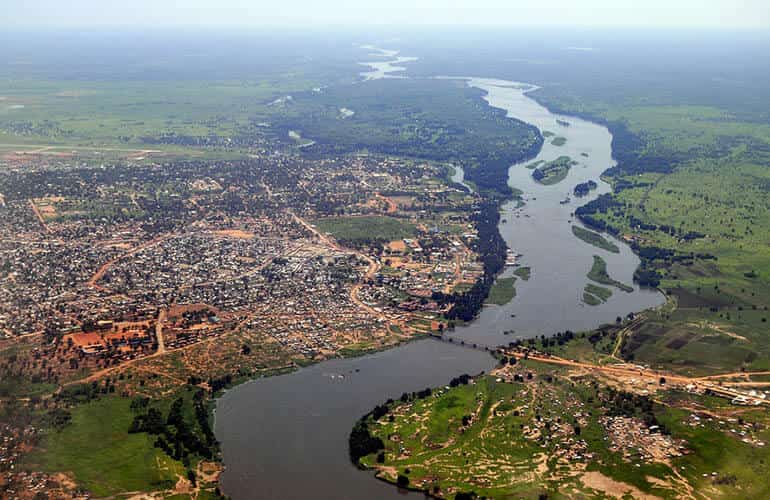
What is the Nile?
The Nile or Nile river is the largest watercourse in Africa and one of the longest in the world. It flows through the territory of ten countries and ends up in the Mediterranean, in the so-called Nile delta. In this last one are the Egyptian cities of Cairo and Alexandria.
The Nile is a famous river, notoriously present in many ancient accounts, not only of the Egyptian Empire that flourished on its banks but also of neighboring cultures, such as the Semitic (as told in the Bible). Its name comes from the Arabic ‘Nil which in turn is inherited from the Greek Neilos
Characteristics of the Nile
Before the formation of the Nile, there were four other rivers that ran from Ethiopia to the Mediterranean.
This was discovered by satellite observations showing these formations during the Miocene period (23 to 5.3 million years BC).
Nile location map
The Nile is located in the eastern region of the African continent.
The Nile is in the eastern region of the African continent. It drains an area of about 3,349,000 square kilometers across ten countries from south of the equator to the Mediterranean. This is about 10% of the total area of Africa.
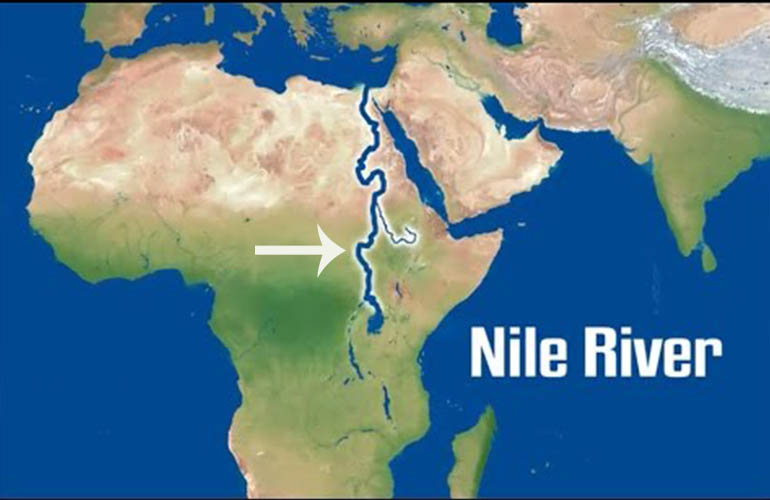
Dimensions of the Nile
The Nile was considered the longest river in the world until the correct measurements were made of the Amazon River in 2008. Its average flow is 2830 m3/s and reaches an average depth of 570 meters and a maximum of 1.4 kilometers.
It runs for 6853 kilometers through the territories of the nations of Uganda, Ethiopia, Tanzania, Rwanda, Burundi, Kenya, Sudan, South Sudan, Eritrea, Democratic Republic of Congo and Egypt, flowing in a south-north direction.
Cleopatra Egypt Tours offer the best Egypt Nile cruise Packages which make you you discover the secrets of the Nile River.
The river Nile is composed of different river systems or stages:
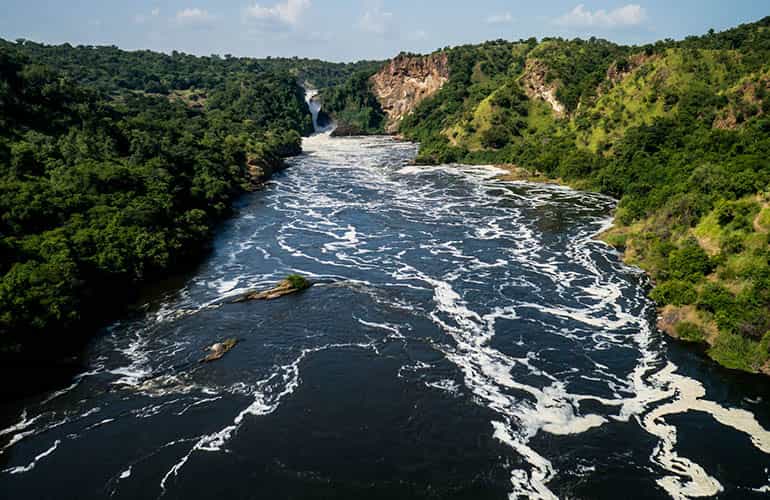
The Blue Nile:
The Blue Nile. Located in Ethiopia, it is the most vigorous branch of the Nile, carrying 90% of the water and 96% of the sediments of the This long Nile, so-called because of the blue coloring of its waters which contrasts with the somewhat silty color of its brother the White Nile, originates in Ethiopia and specifically from the Abbai River which runs for about 1500 kilometers and falls into Lake Tana which is characterized by a multitude of islands on which a huge number of monasteries belonging to the Orthodox Christian Church take refuge.
The wide course of this river will continue for about 30 kilometers until it falls from 45 meters high in what is known as the Tississat waterfall and from there it will continue its journey towards the encounter with its consanguine river, the White Nile.
The White Nile.
Located between Uganda and Kenya, west of Nairobi, it constitutes the entire branch before Khartoum (Sudan), where it merges with the blue one. Its name comes from the whitish clay that can be found in its waters.
The Middle Nile. The area of the river between Khartoum, where white and blue converge, and Aswan, in Egypt, crossing an arid region on the plateau and finding six waterfalls in its path.
Sand Nile (The Middle Nile)
When the two previous slopes of the Nile join in Khartoum, the river becomes, at this point in its journey, an impetuous flow due to the forces of both causes that have joined together. It is here that the arduous path of the Nile begins its pilgrimage through the desert where the vegetation of the riverbanks mixes with the sands, thus generating a contrasting and exotic landscape.
It is in Nubia specifically where the river transmits tranquility and warmth unmatched because they join the yellow color of the desert with the blue of the river and the green of the palms that accompany the bank in this stretch to the flow that continues to seek its way north.
What is the source of the Nile River?
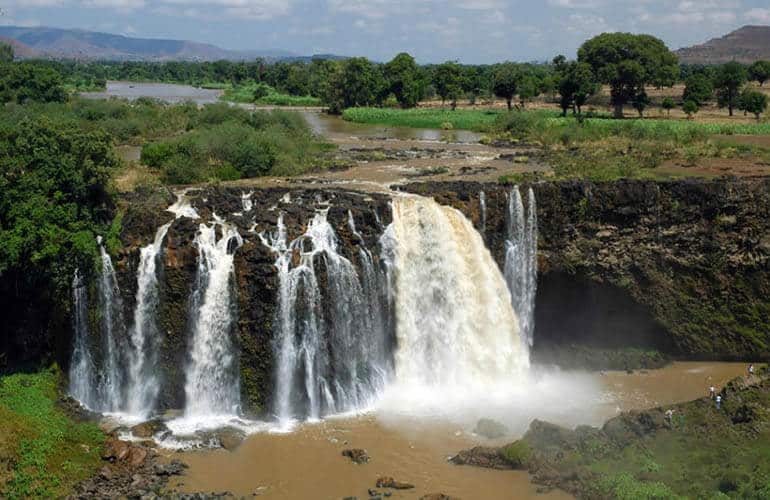
It is commonly thought that Lake Victoria, between Kenya, Tanzania, and Uganda, is the origin of the Nile, as it is from there that the White Nile originates. In its vicinity, in fact, it is known as the Victoria Nile.
Besides Lake Victoria, one of the main tributaries of the Nile is the Kagera River, between Tanzania and Rwanda, which receives water from other rivers in West Africa.
On the other side, the Blue Nile also originates from Lake Tana in the Ethiopian highlands, as well as from the Tekeze, Atbara, Sobat and other smaller rivers, which serve as tributaries. In other words, the Nile has multiple points of origin.
Nile Delta
The delta end of the Nile takes place in northern Egypt. Thanks to this wide outlet to the sea, there are some of the fertile lands that saw the birth of the Egyptian Empire (c. 1550-1070 BC).
It is one of the largest deltas on the planet, with 230 km of the Mediterranean coast, densely populated and extremely fertile, due to the sedimentary dragging of the river. In its region are the cities of Cairo and Alexandria, two of the most important of the Egyptian nation.
What is the importance of the Nile River?
The historical importance of the Nile has to do with the emergence of Ancient Egypt, one of the oldest and most important civilizations. For 3,000 years the Egyptian Empire prospered in the central region and under the Nile until its conquest and annexation by the Roman Empire in 31 BC.
In the history of Ancient Egypt, the Nile played a vital role. Its recurrent floods and its rich rivers guaranteed extra fertile land that did not require such intense agricultural work.
On the one hand, this allowed them to engage in other activities: cultural, military or religious. In addition, the mobilization of the rivers allowed them to transport minerals obtained in the regions of the country.
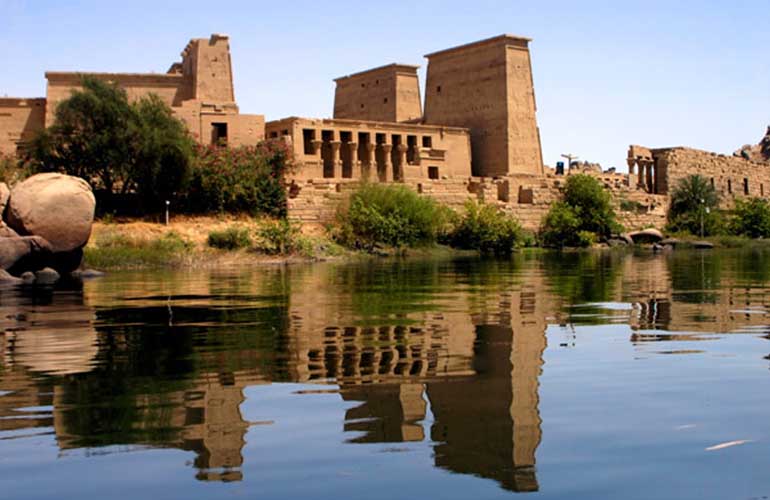
Animals of the Nile Valley
- The ancient Egyptians shared their living space with many different beasts, crawling birds and fish. In the deserts to the east and west of the Nile Valley, there were fierce lions and wild bulls, as well as antelopes and gazelles. one could see hippopotamuses, Animals appear on many ancient Egyptian objects. They were considered to be part of the “world system” established by the sun-god, and they were land-based versions of many gods. In the hieroglyphs, they also used symbols of animals.
- The rams symbolize some of the most important gods of ancient Egypt. The danger of being caught and eaten by a crocodile led the Egyptians to try to win over these dangerous beings. Therefore, the crocodile became the symbol of the god Sobek, and the priests adorned the sacred crocodiles with jewels and mummified them upon their death.
- The hippopotamus was a holy animal of its association with the god Set, the enemy of Osiris and Horus, the rightful owners of Egypt. In fact, hippopotamuses could easily overturn a papyrus boat and for this reason, they were often hunted.
- The lion represented power, and thus became the emblem of the sun king. Rarely is a lion shown being hunted by anyone other than the pharaoh? The goddess Hathor was often depicted as a cow among the papyrus clumps. Cats devoted to the goddess Bastet have mummified them after they died. They were wrapped in strips of cloth and their faces were painted to make them look dazed.
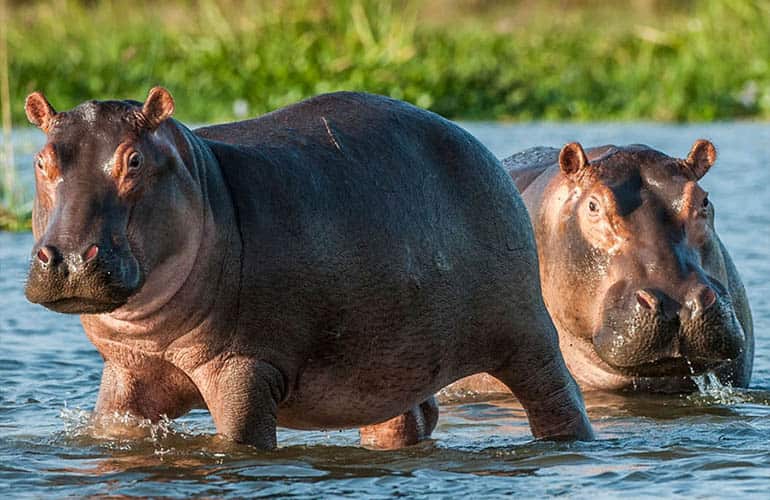
Cleopatra Egypt Tours offer the best Egypt Nile cruise Packages which make you you discover the secrets of the Nile River.
Ancient Egypt Nile
As a source of life, the Nile influenced a large part of ancient Egyptian society and mythology. The myths of the creation of an ancient hill emerging from the waters of chaos reflect villages squatting on hills until the tide comes in and they can harvest their harvest.
The need for large-scale irrigation works in the valley and the associated mobilization of labor have consolidated local, regional and ultimately centralized authorities – mainly the State.
The valley and its delta were divided into nomads or provinces, each with a nomarch or governor and one or more local deities. As power diminished and flowed between regions and dynasties, some of the deities took on the national significance and absorbed the attributes of the smaller gods in an eternal process of religious mergers and acquisitions. For example, Re, the principal god of the Old Kingdom, was assimilated to Amen, the original goddess of Thebes in the New Kingdom. But despite its complexity, the ancient Egyptian religion was essentially practical: its main concerns were to perpetuate the benevolent sun and the river, to maintain the just order embodied by the goddess Ma’at, and to obtain resurrection in the afterlife.
The abundance of harvests was generally evident, as prayers for Happy the Nile God were followed in June by a green wave of humus-rich water. However, if the Nile did not rise for a number of years, it was followed by the “hyena years in which people became hungry. Archaeologists believe that it was the famine – caused by over-exploitation of land and lack of flooding – that caused the collapse of the Old and Middle Empires and the subsequent anarchy.
But every time a new dynasty has emerged to reunite the country and restore the old order.
This extraordinary conservatism has continued even under a foreign regime: the Persians, Ptolemy’s, Nubians, and Romans continued to build temples dedicated to the ancient gods.
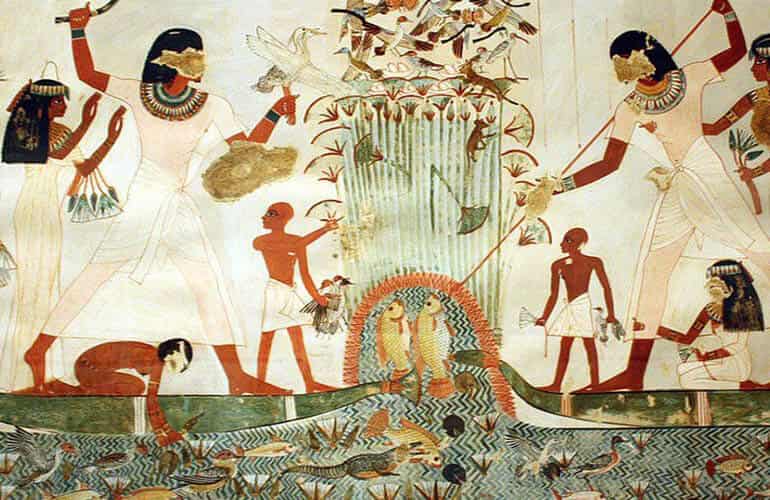
Threats to Nile River
Being the most important river in East Africa puts great pressure on the Nile, which is used for searching for food, watering crops, drinking, etc. Almost all of Egypt’s cities, both ancient and modern, are located along its valley or on its banks. The needs and economic activities of the millions of inhabitants increase the level of pollution and the risk of water shortage, accelerated by high levels of evaporation.
The establishment of the Aswan Dam created an extra problem: since a large amount of sediment is often trapped, there was an excessive proliferation of bacteria that killed off the oxygen in many parts of the course.
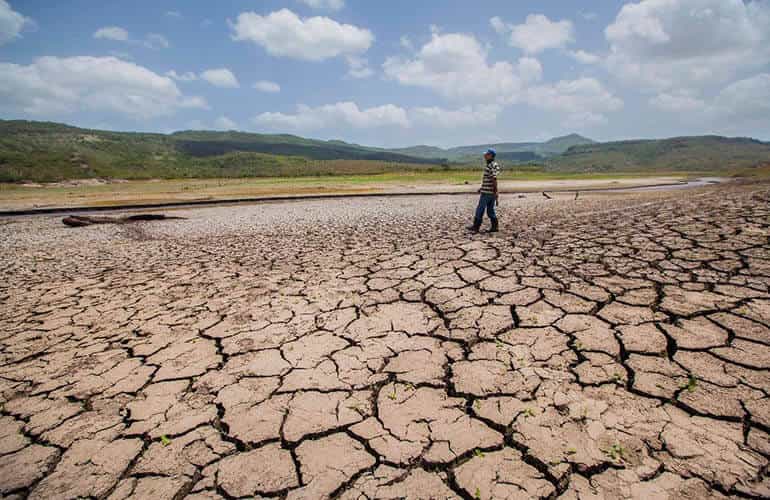
Towns and cities along the Nile River
The Nile River runs along Egypt, crossing numerous towns, of which we highlight:
The city of Asyut – also called Assiut – in Upper Egypt, is the largest city in the region, and its history dates back to ancient Pharaonic times. Its position over time varied, but for many years it retained its importance, and today it is home to numerous testimonies of its past.
Originally, Asyut was constituted as a settlement of little interest, but soon became the capital of the 13th Nomo of Upper Egypt, and acquired the name of Syut. Much later, it was the Greeks who rediscovered the place, and called it Lycopolis, that is, the “city of the wolf”.
Cairo is the capital of Egypt. It is the largest city in the Arab world and in Africa. To the southwest is the city of Giza and the ancient necropolis of Memphis, with the Giza plateau and its monumental pyramids, such as the Great Pyramid. To the south is the site where the ancient city of Memphis was built.
The city was founded in 116 B.C., in what is now known as Old Cairo, when the Romans rebuilt an ancient Persian fortress along the Nile River. Before its foundation, Memphis or other cities were the capital of the Pharaonic Empire. The current name is due to the Fatimids, who named the city Al-Qahira. After several invasions by the Mamluks, Ottomans, Napoleon, and the British, Cairo became the sovereign capital in 1952.
Luxor, imperial Egypt in all its glory. This city is one of the great attractions of the country of the Nile and an unavoidable destination when traveling to Egypt. The current Luxor is built on the ancient Thebes, the capital of the New Empire and one of the most important cities of the time of the pharaohs. Nowadays its archaeological remains and its necropolis are considered a World Heritage Site.
Aswan, one of the most important Egyptian cities, is one of the points where the cruises along the Nile usually start or end. As a starting point, perhaps in your visit, we will have time to travel with more tranquility, extending our stay in the country a couple of days to know one of the wonders of the country. Aswan, known above all for its magnificent temples and the Great Dam, is a spectacle in itself.
Festivals and Traditions of the Nile
Numerous festivals and traditions take place on the Nile River, also in the towns along its banks. Most of these festivals and Egyptian traditions have their origin in the worship of the gods.
The festival of Wafaa Al Nil, celebrated in September, is a festival dedicated to the river Nile and has taken place since ancient times. The main highlights of this festival focus on activities for children who can participate in painting courses and poetry sessions as well as seminars and music concerts.
In Egypt, we find other festivals and traditions that take place throughout the year as is the case of the Pharaonic Wedding held in November. It’s a holiday that comes from the Pharaonic epoch and his aim is to commemorate the civilization of ancient Egypt. The weddings take place during this period of time in the Karnak Temple in the Pharaonic style, with the ancient rituals and dresses.
It is interesting to attend and see live some of the most important traditions of the country in order to discover aspects of Egyptian culture and ancient traditions.

Nile river activities and Sports
The Nile River offers the tourist a multitude of activities and sports. The most popular ones that can be done in the Nile river are, of course, water sports.
We can practice surfing, kayaking, sailing with Felucca, water skiing, and many other activities which become the favorites of tourists visiting the Nile River.

Book your Nile Cruise now to know more about the Nile River.






